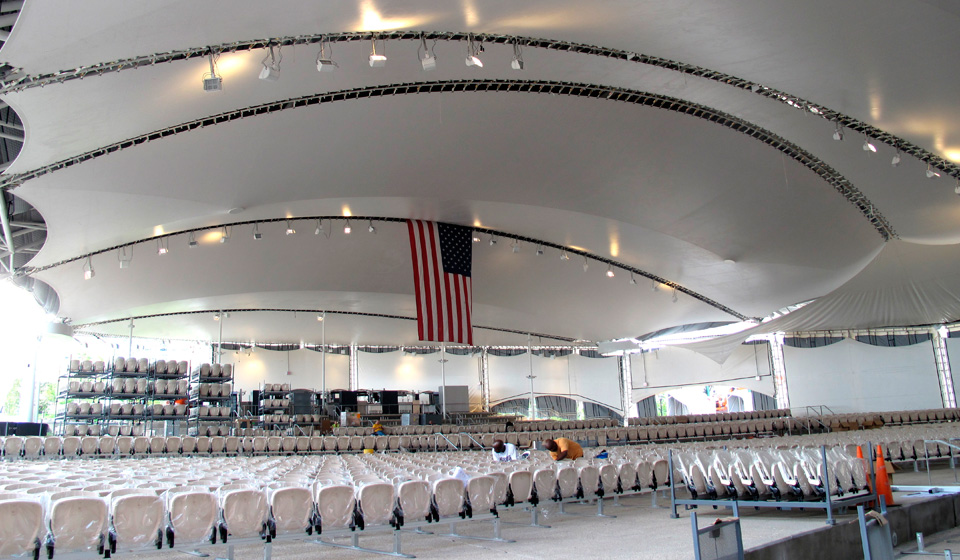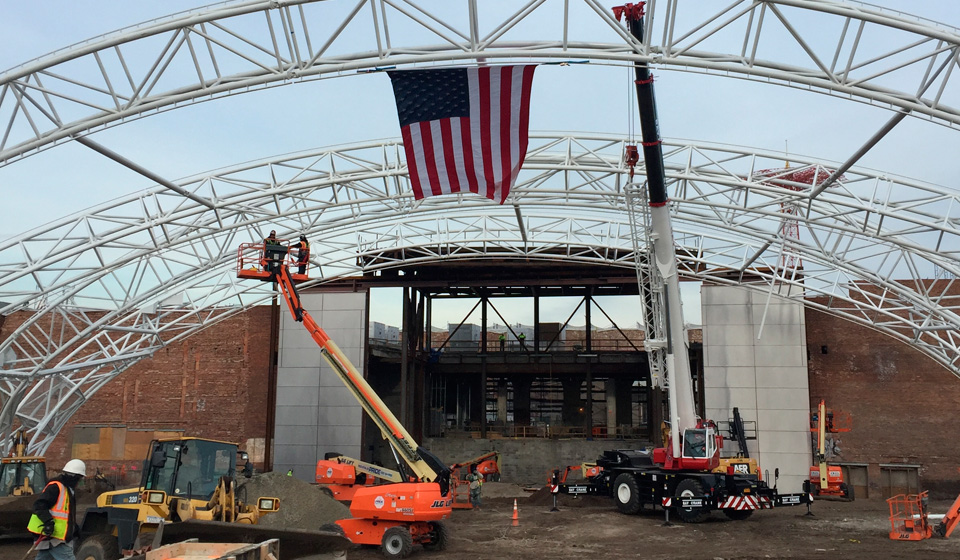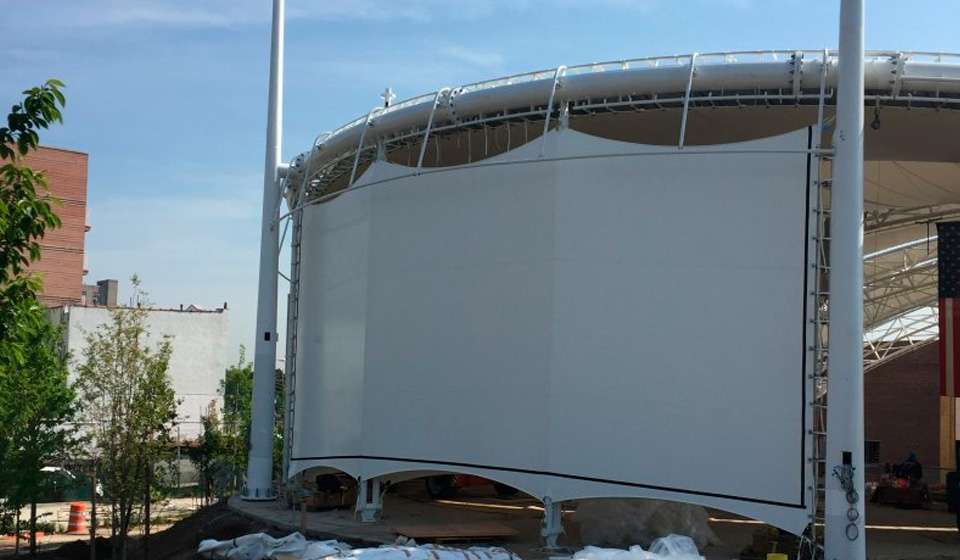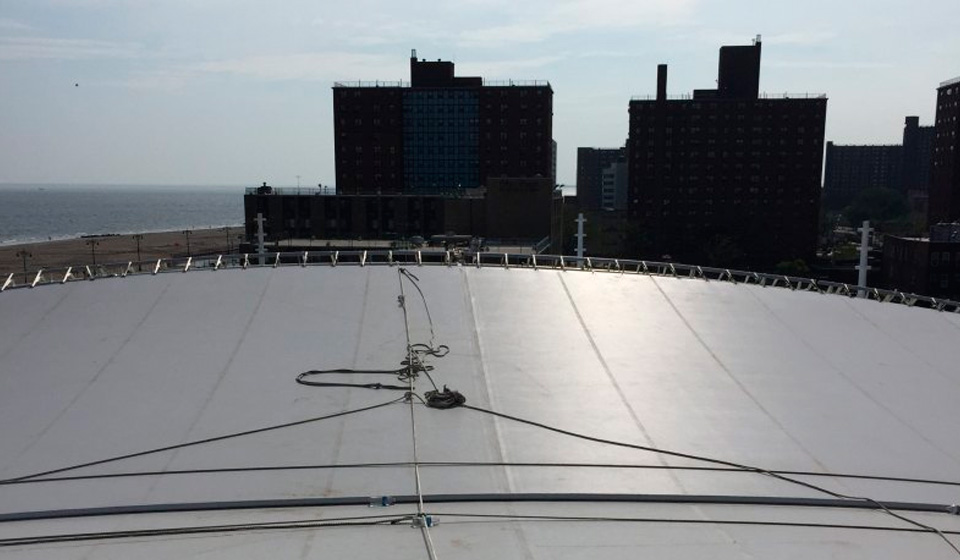
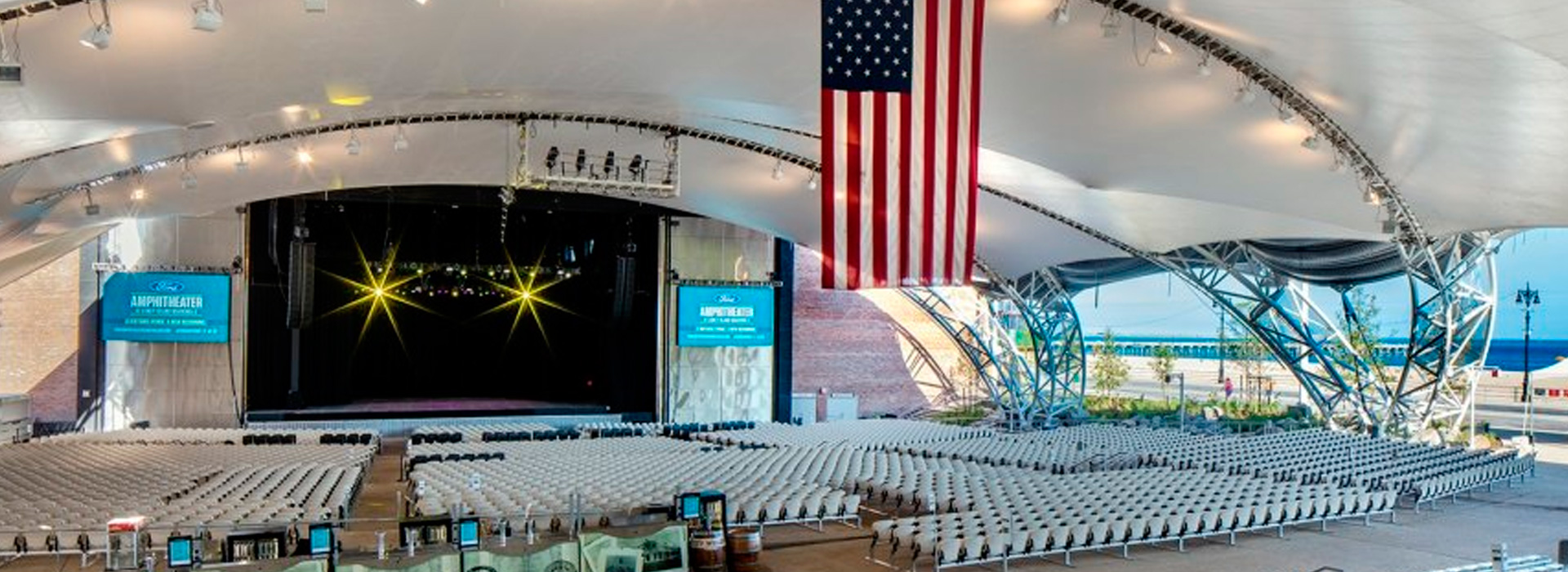
Coney Island Ford Amphitheater
Coney Island’s Seaside Park Amphitheater to Feature Birdair Membrane
Fabric Type: PVC Membrane
Market Sector: Entertainment / Leisure
Project Size: 32,500 sq.ft.
Architect: Gerner Kronick + Valcarcel Architects
Engineer: FTL Design and Engineering Studio & WSP USA & Mueser Rutledge Consulting Engineers
Owner: iStar Financial
General Contractor: Hunter Roberts Construction Group
Completion Date: June 9, 2016
Sometimes the best way to replace a deserted historic landmark is with a new community-centered space. The Seaside Park and Community Arts Center is a new development aimed at making Coney Island, New York, more of a year-round destination. The project includes an entertainment complex and public park that is housed in the empty landmarked space that was once home to the historic Childs Restaurant, one of the country’s first restaurant chains, which flourished in the 1920s and 1930s. The Seaside Park includes a 5,000-seat outdoor amphitheater topped with a Birdair PVC membrane roofing system.
“This is a shining example of adaptive reuse of a really wonderful structure,” says Nic Goldsmith, Senior Principal at FTL. “By augmenting an older building with a tensile structure and other enhancements, you get a new destination that brings in energy, money and culture, all at once.”
A Team Effort
The $53 million project was completed in June 2016 thanks to a collaborative effort between FTL Design & Engineering Studio (as the tensile roofing consultant), Gerner Kronick + Valcarcel, Architects (for the Childs Restaurant restoration and Seaside Park development), Birdair (design and fabric installation), structural engineering from WSP USA, Mueser Rutledge Consulting Engineers (for the geo-tech engineering) and genearl contractor Hunter Roberts Construction Group.
The new roof on the Ford Amphitheater, designed and installed by Birdair, features approximately 40,900 square feet of a PVC membrane exterior and 32,565 square feet of a PVC membrane liner, with two acoustical curtains. These curtains are supported by two pairs of structural steel leaning arches that define smaller scaled fabric fields, allowing for demountable functionality to make the venue hospitable year-round. The structure’s clear span arches also extend for over 100 feet, providing infrastructure support for sound and lighting fixtures and creating uninterrupted sight lines.
“The intricate complexities of the site and its use required a seasonal structure that could be demounted during the off season and stored on site. Fabric solutions offer one of the few possibilities for such a condition and the PVC fabric was especially well suited for this application,” says Goldsmith.
